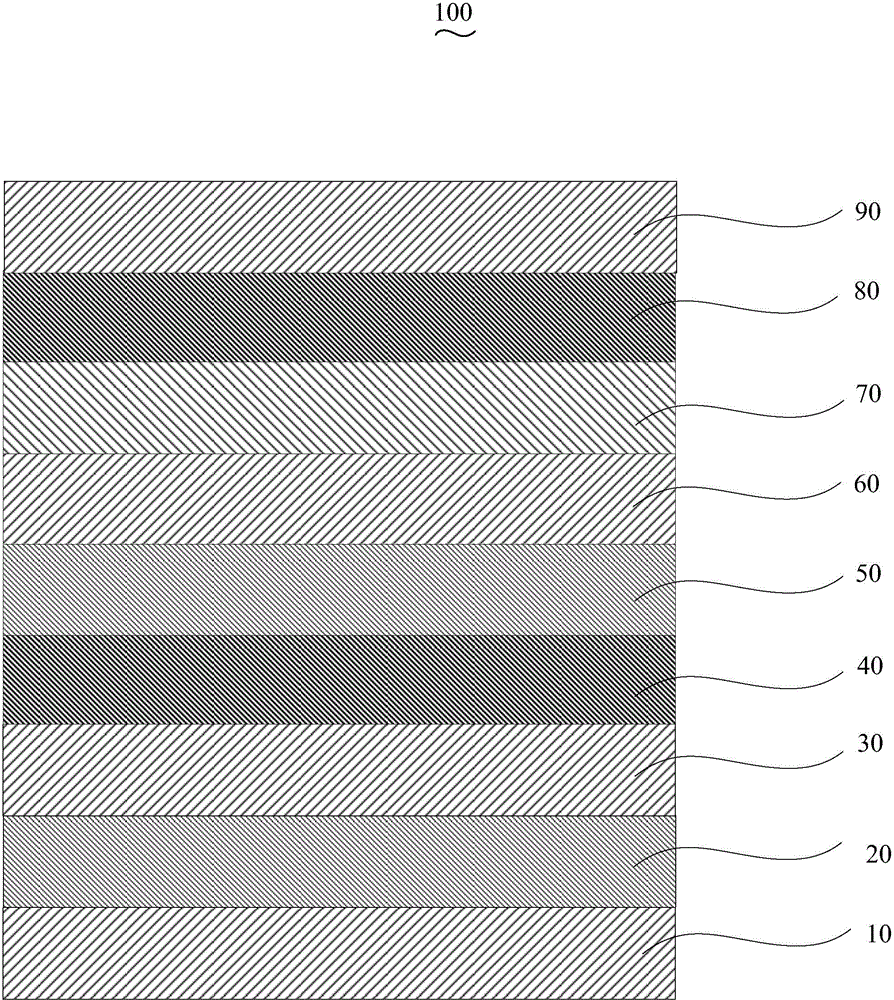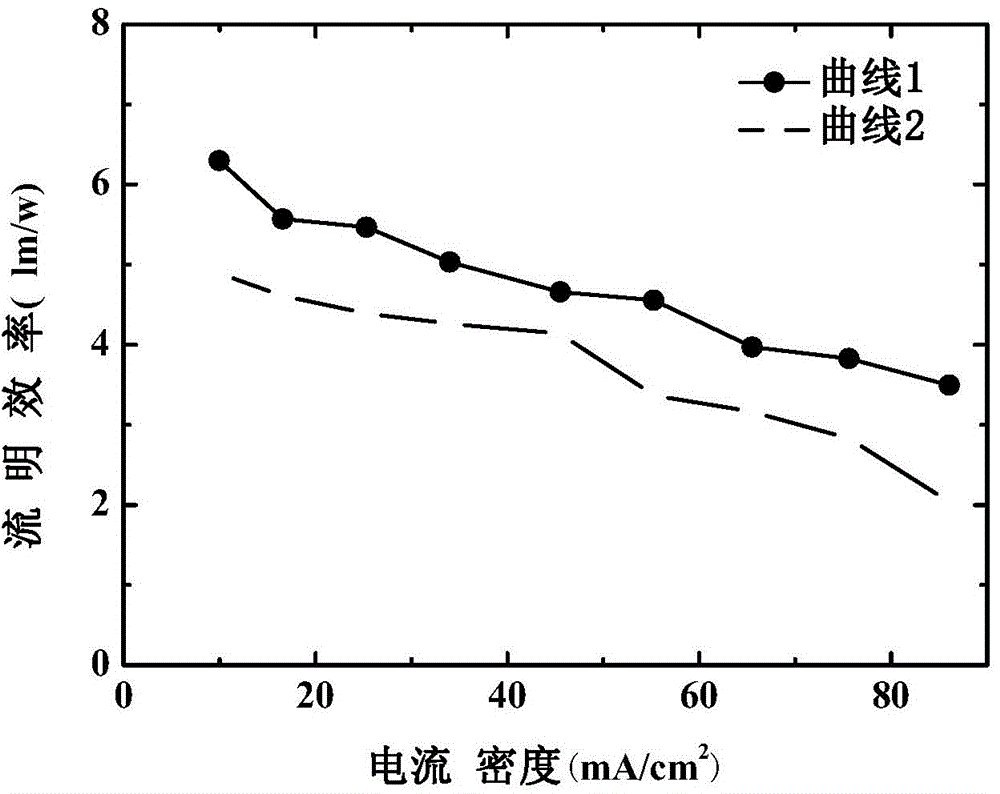Organic electroluminescence device and preparation method thereof
An electroluminescent device, electroluminescent technology, applied in the direction of electric solid device, semiconductor/solid state device manufacturing, electrical components, etc., can solve the problems of refractive index difference, total reflection loss, low light output performance, etc.
- Summary
- Abstract
- Description
- Claims
- Application Information
AI Technical Summary
Problems solved by technology
Method used
Image
Examples
preparation example Construction
[0038] The preparation method of the organic electroluminescence device 100 of an embodiment, it comprises the following steps:
[0039] Step S110 , preparing the scattering layer 20 on the surface of the glass substrate 10 by electron beam evaporation.
[0040] The scattering layer 20 is formed on one side surface of the glass substrate 10 . The scattering layer 20 is composed of a zinc doped layer 201, a zinc powder layer 202 and an iron salt doped layer 203. The zinc doped layer 201 is prepared on the surface of the glass substrate 10 by electron beam evaporation. The zinc doped layer Layer 201 includes a luminescent material and zinc powder doped in the luminescent material, the luminescent material is selected from the group consisting of 4-(dinitrilemethyl)-2-butyl-6-(1,1,7,7-tetra Methyljuronesidine-9-vinyl)-4H-pyran (DCJTB), 9,10-di-β-naphthylenylene anthracene (ADN), 4,4′-bis(9-ethyl-3 -carbazolevinyl)-1,1′-biphenyl (BCzVBi), 8-hydroxyquinoline aluminum (Alq 3 ), t...
Embodiment 1
[0060] The structure prepared in this example is glass substrate / Alq 3 :Zn / Zn / Alq 3 :FeCl 3 / ITO / MoO 3 / NPB / Alq 3 / TAZ / CsF / Ag organic electroluminescent device, in this embodiment and the following embodiments, " / " indicates a layer, and ":" indicates doping.
[0061] The glass substrate is N-LASF44. After rinsing the glass substrate with distilled water and ethanol, soak it in isopropanol for one night. Prepare the scattering layer on the glass substrate. The scattering layer is composed of zinc doped layer, zinc powder layer and iron salt doped layer. The zinc doped layer is prepared on the surface of the glass substrate by electron beam evaporation, and the material is Alq 3 : Zn, Alq 3 The mass ratio to Zn is 12:1, the thickness is 120nm, and the energy density of electron beam evaporation is 50W / cm 2 , the zinc powder particle size is 25nm, the zinc powder layer is prepared by electron beam evaporation on the surface of the zinc doped layer, the zinc powder particle ...
Embodiment 2
[0069] The structure prepared in this example is glass substrate / DCJTB:Zn / Zn / ADN:FeBr 3 / IZO / MoO 3 / TCTA / ADN / TPBi / CsN 3 / Al organic electroluminescent devices.
[0070] The glass substrate is N-LAF36. After rinsing the glass substrate with distilled water and ethanol, soak it in isopropanol for one night to prepare a scattering layer on the glass substrate. The scattering layer is composed of zinc doped layer, zinc powder layer and iron salt The composition of the doped layer is to prepare the doped layer of zinc by electron beam evaporation on the surface of the glass substrate. The material is DCJTB:Zn, the mass ratio of DCJTB to Zn is 10:1, and the thickness is 150nm. 50W / cm 2 , the zinc powder particle size is 20nm, the zinc powder layer is prepared by electron beam evaporation on the surface of the zinc doped layer, the zinc powder particle size is 40nm, the thickness is 10nm, and the energy density of electron beam evaporation is 30W / cm 2 , on the surface of the zinc...
PUM
| Property | Measurement | Unit |
|---|---|---|
| Particle size | aaaaa | aaaaa |
| Thickness | aaaaa | aaaaa |
| Thickness | aaaaa | aaaaa |
Abstract
Description
Claims
Application Information
 Login to View More
Login to View More - R&D
- Intellectual Property
- Life Sciences
- Materials
- Tech Scout
- Unparalleled Data Quality
- Higher Quality Content
- 60% Fewer Hallucinations
Browse by: Latest US Patents, China's latest patents, Technical Efficacy Thesaurus, Application Domain, Technology Topic, Popular Technical Reports.
© 2025 PatSnap. All rights reserved.Legal|Privacy policy|Modern Slavery Act Transparency Statement|Sitemap|About US| Contact US: help@patsnap.com



